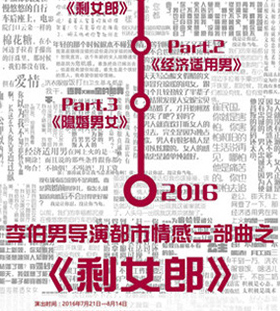时间:2007年3月5日
地点:北京 联系后确认
费用:56000元 联系后确认
联系方式:010-51299010
绿带培训(10天)费用:RMB18000,黑带培训(20天)费用:RMB38000(含午餐、教材费、培训软件工具)
培训时间:2007年3月4-8日,11-15日,18-22日,25-29日
培训大纲:以ASQ黑带大纲为标准,满足学员ASQ黑带认证CSSBB要求,辅导学员至少完成1~2个项目.
培训讲师:资深六西格玛黑带大师,有大量成功六西格玛实施经验和案例.
培训语言:中文
具体培训大纲:
DEFINE AND MEASURE PHASE
Introduction to Six Sigma
Define Phase Overview
Project Focus 1 Day
•Project Management Workshop
•Management and Planning Tools
Data Driven Analysis 1 Day
Measure Phase Overview
Process Mapping-
Cause and Effect Analysis
FMEA
1 Day
Capability Analysis
MSA
CLT 1 Day
•Team Dynamics
•Negotiation Skills
•Analyze Phase Overview
•Refresher for Week # 1' s Training Modules
1 Day
- 5 -
ALYZE PHASE
•Multi-Vari Analysis
•Hypothesis Testing Theory and Roadmap
1 Day
•Hypothesis Testing Methods
•Project (define - Measure Phase) Review
•Contigency Table
•One WayANOVA
•Two Way ANOVA
•Nonparametrics Statistics
•Advance Nonparametrics Statistics
•Regression and Correlation Analysis
1 Day
1 Day
1 Day
•Multiple Linear Regression
•Logistic Regression
•Improve Phase Overview
•Refresher for Week # 2' s Training Modules
1 Day
E
•Introduction to Design Of Experiments
•Full Factorial Designs
•2k Factorial Designs
1 Day
•DOE for Sigma
•Fractional Factorial Designs
1 Day
•Response Surface Method
•Taguchi Methods
1 Day
•Evolutionary Operation
•Rational Tolerance
•Control Phase Overview
1 Day
•Introduction to Control
•Control Plan
•SPC Theory and Variables
•Alternate Control Charts and Methodology
•Refresher for Week # 3' s Training Modules
1 Day
- 6 -
NTROL PHASE
•Standards and Visual Controls
•Organizational Learning and System Thinking
•Error Proofing Techniques
•Reliability and Maintainability
•Project (Improve - Control Phase) Review
1 Day
•Business Case of Six Sigma-2
•DFSS Overview and QFD-4
1 Day
•Introduction to Lean Production
•Train the technical trainer
•Coaching and mentoring
•Agent of change
•Basic understanding about SQM
•Transactional Six Sigma Overview
•Realization
•Review Of The Six Sigma Project Roadmap
•Six Sigma Conclusion
•Six Sigma Black Belt Training Wrap Up and Exam.
1 Day
- 7 -
Training Course Outline
Day # 1
•Introduction to Six Sigma
•Define Phase Overview
•Project Focus
The Customer’s Perspective
What’s Important to the Customer
Clarifying Project Definition and Scope
Process Boundary Map
IPO Diagram
Extension of IPO Diagram, SIPOC diagram
Collecting Voice Of Customer (VOC) : Quality Function Deployment (QFD)
Project Definition
Project Title & Rationale
Problem Statement
Project Objective
Projected Business Gain / Financial Impact
Timeline & Team Members
- 8 -
Day # 2
•Project Management
Effective Presentations
Creating an Effective Presentation
A Dynamic Presentation
Create the Project Management Plan
Identify Sub-tasksSequencing & Identifying Resources
Create a Gantt Chart
Facilitating Teams
Meeting Preparations
Facilitate a Group Decision Process
•Management and Planning tools
Tools for organizing verbal data
Affinity Diagram
Relations Diagram
Tools for putting problems into solvable form
Tree Diagram
Matrix Diagram
Tools for analyzing and improving the process
Arrow Diagram
PDPC Chart
•Data Driven Analysis
What Is Data
Why Use Data
The Role of Statistics
Comparison of Data Types
Levels of Knowledge
Converting Attribute Data to Variable Data
- 9 -
Day # 3
•Measure Phase Overview
Is to identify and explore the KPIVs
Measure Phase toolkits and deliverables
•Process Mapping
Explain and apply techniques for visually documenting a process
Explain the definitions and relationships of CTx’s, Key Process Input Variables and Key
Process Output Variables
Identify the real process being used and find hidden factories. Quantify with Rolled
Throughput Yield.
Establish the relationship between Process Maps,
Cause-Effect, FMEA and
Capability/Control Plans
•Cause and Effect Analysis
Fishbone diagram
Cause and Effect Matrix
•FMEA
Definition of FMEA
What is a Potential Failure Mode ?
FMEA' s Usage or Application Ground
Elements Of FMEA
RPN and Action Priority
Step by step constructing a FMEA
- 10 -
Day # 4
•Capability Analysis (With Minitab example)
Understand the need for Process Capability Evaluation
Quantify Process Capability
Define the Poisson model for calculating process yield
Alternative capability assessment like DPU, RTY etc
•Measurement System Analysis
Understand that Measurement is a Process
Identify and Quantify the Sources of Measurement Variability
Compare Measurement System Variability to Process Variability
Discover Opportunities for Measurement System and Total Process
Variability
Improvement
Terminology and Effect of added inspection
Two types of Gauge R & R
Attribute Gauge R & R
Variable Gauge R & R
•Central Limit Theorem
Standard error of the mean
Distributions of sample means approximate normal with the increase of sample size
- 11 -
Day # 5
•Team Dynamics
To gain a working knowledge of team dynamics as they apply to Six Sigma project
Myers-Briggs personal style models
Where you get your energy: Introvert vs Extrovert
How you gather information: Sensing vs Intuition
How you make decision: Thinking vs Feelings
How you conduct your affairs : Judging vs Perceiving
There is no `right’ type
To discuss how difference styles learn
•Negotiation Skills
The process of negotiation
Negotiation styles
Negotiation tactics
Dealing with skilled negotiators
•Analyze Phase Overview
Screening the trivial many KPIVs
Analyze Phase’ s toolkits and deliverables
Refresher forWeek # 1’s Training Modules
- 12 -
Day # 6
•Multi-Vari Analysis
Variation
Types of Variation
Sources of Variation
Multi-Vari Charts
•Hypothesis Testing Theory and Roadmap
Why learn Hypothesis Testing
Hypothesis Testing description
Null and Alternate hypothesis
The method and Roadmap
Definitions
Qualitative vs Quantitative data
If Quantitative, check distribution for normality
Test for equal variances
Non parametrics testing for non normally distributed’ s data
Day # 7
•Hypothesis Testing Methods
Parametric Testing / Variance Testing
Single parameter testing
Two parameter testing
Effectively conduct and utilize these tests using Minitab
•
- 13 -
Day # 8
•Contingency Table
Why learn contingency tables
Hypothesis testing roadmap
The expected value
•One Way ANOVA
Step by step ANOVA by example
Total Variation is the sum of Between Variation and Within Variation
Degree of Freedom
Mean of Sum of Square
F Statistic
•ANOVA
•Non Parametrics Statistics
Introduction to Non-Parametric Tests
Testing of Hypothesis
Non-Parametric Test
tests for normality
tests for location (central tendency)
tests for scale (dispersion)
tests for association
- 14 -
Day # 9
•Advance Nonparametrics Statistics
•Regression and Correlation Analysis
Create Scatter Plots
Perform Simple Linear Regression and explain
Assumptions
Coefficient of Correlation (R, R2 and adjusted R2)
Common Mistakes
Regression Diagnostics
Confidence Bands
Influential Observations
Standard Error of Estimates
Perform Polynomial Regression
Perform Multiple Variable Regression
Correlation
Describe the computational differences between regression and correlation
Perform a correlation study using Mandel’s Method
- 15 -
Day # 10
•Multiple Linear Regression
Model Selection Strategies
Stepwise Selection
Forward Selection
Backward Elimination
Best Subsets Regression
Assumptions of MLR
Existence
Independence
Linearity
Homoscedasticity
Normality
•Logistic Regression
Limitations of Linear Regression
Logistic Regression
Significance of Parameters
Interpretation of Coefficients
Goodness-Of-Fit
Regression Diagnostics
•Improve Phase Overview
Study the interactions and optimize the vital few KPIVs
Improve Phase’ s toolkits and measurables
•Refresher for Week # 2’s Training Modules
- 16 -
Day # 11
•Introduction to Design of Experiments
•Full Factorial Experiments
Describe a full factorial experiment
Define what is meant by factors & levels, and explain the notation used for a full factorial
experiment design
Explain main effects & interactions
Set up & analyze full factorial experiment using Minitab
•2K Factorial Design
Why do we need to use 2k factorial experimentation?
2k Vocabulary
Steps for DOE Analysis
2k Standard Order Designs
Calculating main effects
Calculating interactions
Adding Center Points
Adding Blocking
Day # 12
•DOE for Sigma
Describe the Taguchi Loss Function and how it can be used as a quality measure
Design and analyze a 23 factorial experiment (or a simpler experiment) with the
sole purpose of reducing the standard deviation
•Fractional Factorial Designs
Screening Designs
Fractional Factorial Designs
Alias Relationships
Design Resolutions
Foldover Designs
Saturated Designs
- 17 -
Day # 13
•Response Surface Method
Introduction to Three-Level Experimental Design for Quadratic Effects
Central Composite Design
Box-Behnken Design
Three-Level Taguchi Design
Path of Steepest Ascent
Linear / Quadratic Models
Common Response Surface Designs
Mixed-Level Designs
•Taguchi Methods
Loss Functions
“Goalpost” vs Taguchi
Control and Noise Factors
Taguchi Techniques
Orthogonal Arrays
Linear Graphs
Interaction Tables
DOE Models — Classical vs Taguchi
Inner and Outer Arrays
Mean Squared Deviation
Signal-to-Noise Ratio
- 18 -
Day # 14
•Evolutionary Operation
The Value of Evolutionary Operation
How EVOP Differs from DOE
The EVOP Method
Setting it up
Execution
Informing the team
•Rational Tolerance
•Control Phase Overview
Sustain the gain obtained with the leveraged KPIVs
Control Phase’ s toolkits and deliverables
- 19 -
Day # 15
•Introduction To Control
Provide an introduction to process monitors and controls.
Determine what is required for the Brown Belt to “walk away” from the project
Introduction to current management tools and philosophies
The 1st three generation of management
The 4th generation of management : Joiner Triangle
Determine the effects of the informal system
•Control Plan
Describe the value of a control plan
Explain the critical components of a control plan
•SPC Theory and Variables
Why we need Statistical Process Control
Introduction to SPC
Implementation and Theory
Control Charts for continuous data
X-bar and R charts
Subgrouping and frequency
Control Chart interpretation
Reaction to Out-of-Control Situations
Other Shewhart charts for continuous data
•Alternate Control Charts and Methodology
CUSUM
EWMA
Introduction To Total Control Methodology
Why Is TCM - Model Line Important ?
Definition Of TCM
Objective with TCM Implementation
- 20 -
Components Of TCM
Positrol Plan
Positrol Log
Control Chart - Corrective Action Logs
OCAP
Set Up Checklist
PM Schedule / Checklist / Procedure
Roles and responsibilities
Day # 16
•Standards and Visual Controls
How to Control the Xs
What is Standardized Work ?
What is a Standard ?
Why Standards are Needed
Visual Controls
Eliminate Waste
5S
7 Types of Waste
Assure Best Practices
•Organizational Learning and System Thinking
Understand why 5S Workplace Organization is a key factor in maintaining success
Learn techniques for building organizational memory to make improvements permanent
Evaluate the pros and cons of standard methods
Learn the CAP-Do method for evaluating the need for standardization
Understand the characteristics of a Learning Organization
Understand why Systems Thinking is critical to the success of Six Sigma
•Error Proofing techniques
To explain the value of error proofing
To describe situations where error proofing is needed
To be able to implement error- proofed systems
Room 1315A, 13/F, Hollywood Plaza, 610 Nathan Road, Mongkok, Kowloon, Hong Kong.
- 21 -
•Reliability and Maintainability
•Project (Improve –Control Phase) Review
Day # 17
•Business Case of Six Sigma
Define EVA, a key indicators of shareholders’ value
Shareholder’ s value calculated based on a financial statement
Link process (project) performance to shareholder value
•DFSS Overview and QFD
Why we need to “Design For Six Sigma”
Six Sigma Methodology for Design
Some tools used in DFSS
- 22 -
Day # 18
•Introduction To Lean Production
Introduction to Lean
Five Principles
Value
Wastes
Tools
Pillars and Supports
•Train The Techinical Trainer
Training needs assessment
Developing training material
Delivering the training
•Coaching and Mentoring
Be able to identify the required people skills vs technical skills for coaching and mentoring
of GBs and other BBs
To supplement a Black Belt’ s technical skills with strong people skills
To be self-prepared in the development as a future MBB
•Agent Of Change
Understanding the role of Black Belt is a change agent
It is like parenthood
Guiding Principles for Managing Change
Transition Difficulties
Seven Habits
- 23 -
Day # 19
•Basic Understanding about Supplier Quality Management (SQM)
To understand the basic concepts of a successful SQM model
Know how to integrate world class Supplier Quality techniques with a
Six Sigma deployment
•Transactional Six Sigma Overview
Characteristics of a service industry
Transactional tools
Forecasting
Design and Analysis of Surveys
Queuing Theory
Benchmarking
•Realization
Day # 20
•Review of the Six Sigma Project Roadmap
•Six Sigma Conclusion
•Six Sigma Black Belt Training Wrap Up and Exam
- 24 -






















网友评论